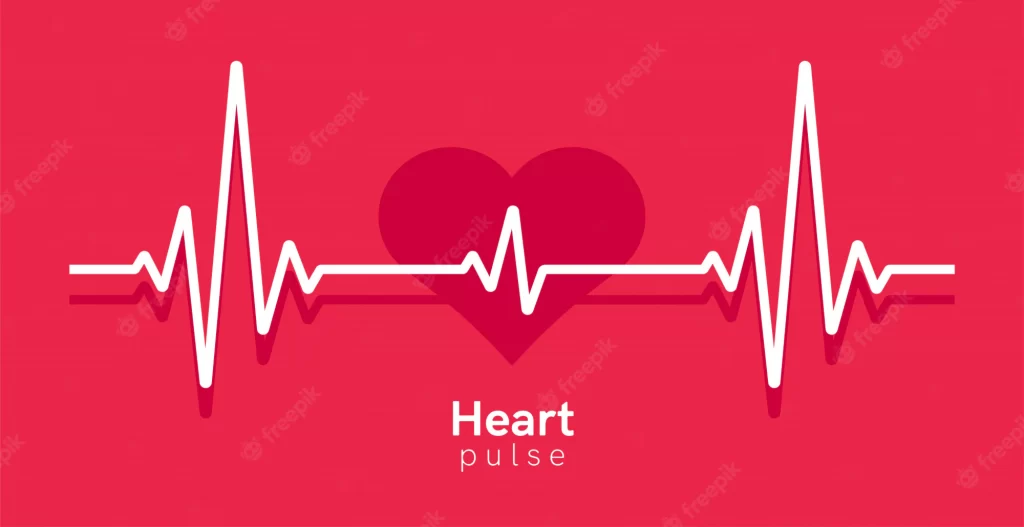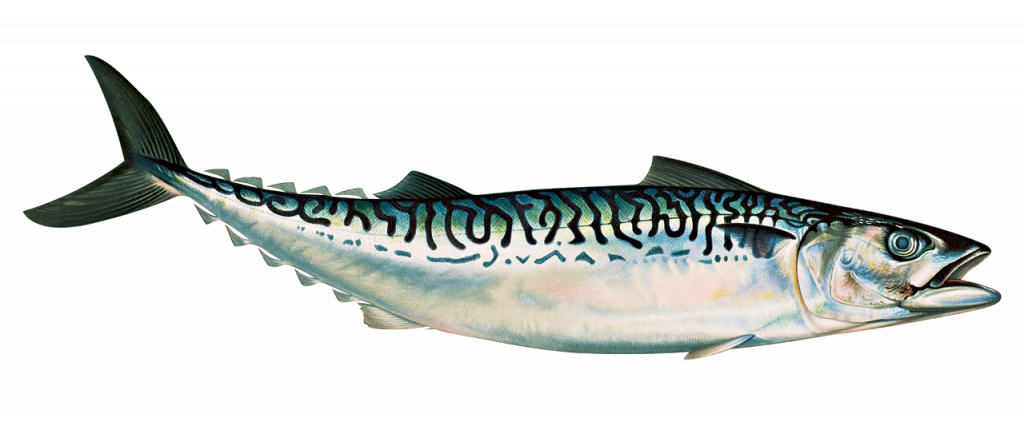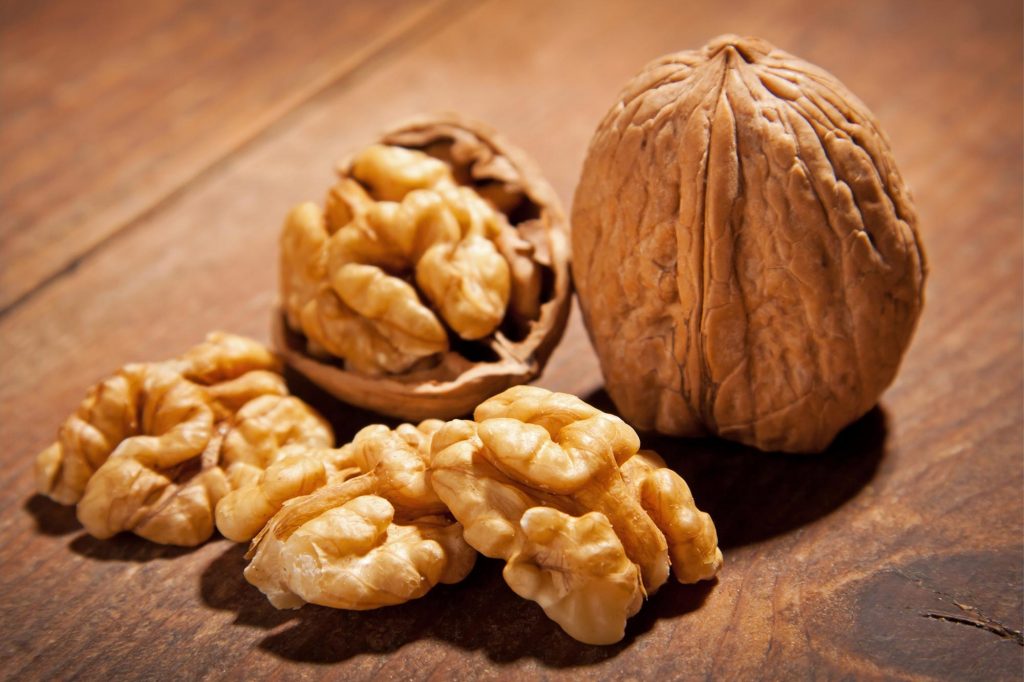Goodness Of Omega 3 In Diabetic Neuropathy and general wellbeing

Omega 3 fatty acid is a wonder nutrient that massively helps your nerves to stay healthy. The body’s functioning depends on nerves. They allow people to move, communicate how things feel, and take control of automatic processes like breathing. When the nerve gets damaged it disturbs almost all normal functions of your body. Some affect the nerves in the periphery, while others harm the nerves that supply the interior organs, including the heart, bladder, and gut. It can impact a variety of bodily processes in this way.
Nerves require nutrition to maintain their health, which is why neuropathy treatment regimens almost always include dietary changes that incorporate, add, and refill Omega 3 fatty acid diets. Let us go into this topic to see how Omega 3 fatty acids aid to battle diabetic neuropathy to a limited extent, as this disease cannot be permanently cured.
What is Omega 3
A significant family of polyunsaturated fats is the omega-3 family, which is a class of fatty acids advantageous to human health in a number of ways. assisting with crucial body functions. They include cardiovascular processes such as lowering blood cholesterol levels, blood clotting levels (which help prevent stroke and heart attacks), blood pressure, minimising the risk of atherosclerosis, and more. Additionally, it aids in the prevention of autoimmune disorders and infections.
The benefits of omega-3 fatty acids for brain health, for the prevention of Alzheimer’s and other brain-related disorders, and even for the treatment of depression and attention deficit disorder have been amply demonstrated. These are necessary fats that the body cannot produce on its own and must obtain from meals. Among the foods high in omega-3 are fish, flaxseed oil, nuts (especially walnuts), flax seeds, vegetable oils, and green vegetables.
What is diabetic neuropathy?
A critical and frequent consequence of both type 1 and type 2 diabetes is diabetic neuropathy. It is a form of nerve injury brought on by persistently high blood sugar levels. High blood fat or sugar levels can cause neuropathy by harming the body’s nerves. With a variety of symptoms, it can affect almost any nerve in the body. The illness typically takes years or even decades to fully manifest.
If you have diabetes and experience numbness, weakness, tingling, or feeling in your hands or feet, you should see a doctor or healthcare professional as these are the early indicators of peripheral neuropathy. The danger usually arises when an ulcer forms on your foot and you are unable to feel pain. You may be more prone to wounds or infections if your peripheral neuropathy is severe or has been present for a time. Amputation may be necessary for severe circumstances due to infection or poor wound healing.

There are mainly four types of diabetic neuropathy such as.
- Peripheral neuropathy: Hands and feet are impacted by this. The most typical type of diabetic neuropathy is this one.
- Autonomic neuropathy: This affects the nerves that regulate the body’s automatic processes, including digestion, and urine.
- Proximal neuropathy (diabetic polyradiculopathy): This is a condition that affects nerves in a particular area of the body, such as the legs or chest wall.
- Mononeuropathy (focal neuropathy): This usually damages any one neuron.
Why are omega-3 fatty acids unique?
They are a crucial component of all cell membranes in the body and have an impact on how cell receptors work in those membranes. They operate as the building blocks for the hormones that regulate blood coagulation, artery wall contraction, and inflammation.
They also attach to cell receptors that regulate gene activity. Omega-3 fats have been demonstrated to help prevent heart disease and stroke may help manage lupus, eczema, and rheumatoid arthritis, and may play a preventive role in cancer and other illnesses.
The majority of the fats that the body needs can be made by it from other fats or simple substances. Omega-3 fatty acids, generally known as omega-3 fats, are an exception to this rule.
Omega-3 Types and Its Conversions
Eicosapentaenoic acid (EPA) and docosahexaenoic acid (DHA) are commonly referred to as marine omega-3s because they are mostly found in fish.
Alpha-linolenic acid (ALA), the most prevalent omega-3 fatty acid in the majority of Western diets, can be found in leafy green vegetables, flax seeds and flaxseed oil, vegetable oils, nuts (especially walnuts), and some animal fat, particularly from grass-fed animals. The conversion of ALA into EPA and DHA is fairly limited because the human body typically consumes it for energy.
Alpha-linolenic (ALA), which is present in a variety of plant-based foods, EPA, and DHA, which are present in deep and cold water algae and consequently also in the fish that consume them, are basically the three different kinds of omega-3.fatty acids
Although the body can also make DHA and EPA from ALA, these active forms are already present in the body. The primary nutritional element affecting this ability to convert is the ratio of omega 3 fatty acids to omega 6 fatty acids. High trans fat, caffeine, and alcohol intakes as well as vitamin C, zinc, magnesium, and B-group vitamin deficits are additional dietary variables linked to reduced omega-3 synthesis.
Age and gender are non-nutritional factors that influence conversion. Women’s bodies do better than men’s bodies in this regard and are typically able to continue this conversion for a longer length of time (perhaps because they need to deliver enough omega-3 for their kids). This conversion is also hampered by smoking, diabetes, and dyslipidemia (high blood lipid levels).
Benefits of Omega 3 fatty acids:

Regularises heart beats
The strongest support for the beneficial effects of omega-3 fatty acids comes from heart disease. These lipids appear to help the heart beat steadily and prevent dangerous or even fatal irregular beats. These arrhythmias are responsible for high rates of cardiac deaths that take place each year across the universe are brought on by such arrhythmias.
Notably, there was a roughly 50% reduction in the incidence of sudden cardiac death. Participants in the more recent Japan EPA Lipid Intervention Study (JELIS) were less likely than statin-only participants to experience a major coronary event, such as sudden cardiac death, a reversible or non-reversible heart attack, angina pectoris, or to open or bypass a blocked or narrowed coronary artery.
Maintains blood pressure
Omega-3 fats also improve blood vessel function, lower triglycerides at larger doses, and lower blood pressure and heart rate. They may help reduce inflammation, which contributes to the formation of atherosclerosis.
May reduce inflammation
Research has demonstrated that DHA and EPA can lower inflammation, which has been linked to a number of cardiovascular diseases, according to an article in the British Journal of Clinical Pharmacology.
Fish-oil supplements having omega 3 as a vital component appeared to help those with rheumatoid arthritis, but there was no discernible advantage for those with asthma or inflammatory bowel disease.
Helps in weight loss
Weight loss is frequently listed as one of the advantages of using fish oil supplements.
Dieters who are trying to lose weight frequently feel more hungry. It explains why omega-3 fatty acid supplements are occasionally suggested to reduce hunger. However, the degree to which this nutrient suppresses appetite will depend on an individual’s health and metabolism.
In one study, participants who were overweight or obese were placed on an Omega 3 fatty acid-rich diet. The control group consumed a low-nutrient diet. The purpose of this study was to find out if omega-3 had an impact on food consumption. The findings demonstrated a favourable association; over time, those who consumed foods high in omega-3 felt less
Aids in increasing Metabolic Rates
You burn much more calories each day if your metabolic rate is high which is brought by Omega 3. Additionally, it implies that you can eventually keep the weight off. Omega 3 has been shown in numerous studies to help boost metabolism. Both young adults in good health and older women in good health have shown that this vitamin has an impact on metabolism.
Burns more calories During Exercise
According to research, omega-3 may boost the number of calories burned while exercising. The nutrients cause your body to start using fat reserves as energy during exercise rather than carbohydrates. Women who took fish oil daily in one study burnt more calories than those who didn’t. Fish oil supplements are a successful weight loss method since they are taken in conjunction with an exercise programme.

Builds muscle mass
In most cases when fish oil did not promote weight loss, it promoted fatty acid reduction and muscle development instead. Participants saw a decrease in waist circumference despite their weights staying the same. Additionally, their hip-to-waist ratios shrank. With diet and exercise, fish oil may therefore enable you to lose one or two dress sizes.
Keep in mind that fat burns fewer calories than muscles. While a result, taking fish oil supplements causes you to burn more energy as you gain muscle. If you make the correct lifestyle adjustments, you can finally see improvement on the scale.
Inhibition of insulin
According to a study in the International Journal Of Obesity, the effects of omega-3 fatty acids for weight loss are due to insulin suppression. The same diet was given to two participant groups with the exception of fish. In comparison to the control group, the fish oil group lost more fat and had a greater metabolic rate.
For the group taking fish oil, the insulin levels were 50% lower. When someone consumes calories, insulin inhibits fat burning and encourages fat storage. It prevents the enzyme lipase from converting fat into energy. Additionally, it turns on an enzyme that turns carbs into fat. Therefore, a decrease in insulin results in increased fat burning.
Natural source of Omega 3 fatty acids
1. Anchovies (411 mg per serving)
Small, fatty anchovies are frequently purchased in cans in dried form. Anchovies can be rolled around capers, inserted inside olives, or used as a pizza and salad topping. They are typically consumed in very little amounts.
They are also used to flavour a variety of foods and sauces, such as Worcestershire sauce, remoulade, and Caesar dressing, due to their potent flavour. Niacin, selenium, and calcium are all nutrients that are abundant in anchovies, which are also good sources of niacin.
411 mg of EPA and DHA (combined) are present in 5 anchovies (20 grams), or 2,053 mg in 3.5 ounces, of omega-3 content (100 grams).
2. Fish liver oil ( 2,438 mg per serving)
Cod liver oil is majorly considered a dietary supplement than a food. It is, as its name suggests, oil that has been taken from the livers of codfish. A single tablespoon of this oil provides 170% and 453% of the Daily Value (DV) for the vitamins D and A, in addition to being high in omega-3 fatty acids. Therefore if you intake just 1 tablespoon of cod liver oil, it will suffice more than your needs for three crucial elements. To avoid injury, don’t consume more than 1 tablespoon at once of vitamin A.
2,438 mg of EPA and DHA (combined) are found in omega-3 per tablespoon.

3. Salmon ( 2,150 mg per serving)
One of the foods having great nutritional value per serving is often considered to be salmon. It has a lot of minerals, including a lot of vitamin D, selenium, and B vitamins as well as high-quality protein. According to studies, persons who consume fatty fish on a regular basis, such as salmon, are less likely to develop diseases like heart disease, dementia, and depression.
3.5 ounces contain 2,150 mg of EPA and DHA combined.
4. Herring ( 2,150 mg per serving)
A medium-sized oily fish is a herring. It is frequently sold as a canned snack after being cold-smoked, pickled, or pre-cooked. In some places, such as England, where it is known as kippers and served with eggs, smoked herring is a common breakfast item. A 3.5-ounce (100-gram) portion of herring has 779% of the daily value (DV) for vitamin B12 and about 100% of the daily value (DV) for selenium.
3.5 ounces (100 grams) contain 2,150 mg of EPA and DHA combined.
5. Sardines ( 1,463 mg per serve)
Small, oily sardines are frequently consumed as an appetiser, snack, or special treat. They are very nutrient-dense, particularly when consumed whole. They nearly all have the nutrients your body needs. More than 370% of the DV for vitamin B12, 24% of the DV for vitamin D, and 96% of the DV for selenium are found in a 3.5-ounce (100-gram) serving of drained sardines.
1 cup (149 grams) of canned Atlantic sardines contain 1,463 mg of EPA and DHA (combined), or 982 mg per 3.5 ounces.
6. Mackerel ( 4,580 mg per serving)
Small and fatty fish called mackerel. A 3.5-ounce (100-gram) portion of mackerel has 500% of the Recommended Daily Intake (RDI) for vitamin B12 and 130% of the RDI for selenium. Mackerel is exceptionally rich in minerals.
3.5 ounces (100 grams) contain 4,580 mg of EPA and DHA combined.

7. Shellfish (329 mg per serving)
One of the healthiest things you can eat is shellfish. Actually, oysters contain the most zinc of any food in the world. Oysters are a delectable appetiser, snack, or main course. Oysters that are still in the shell are prized in many cultures.
6 raw eastern oysters have 329 mg of EPA and DHA (combined), or 3.5 ounces contain 391 mg (100 grams).
8. Caviar (1,046 mg per serving)
Fish roe, or the eggs from which caviar is made. Generally regarded as a high-end food, caviar is most frequently used as a garnish, appetiser, or taster in little amounts. Omega-3 fatty acids and choline are both found in abundance in caviar.
6,540 mg per 3.5 ounces or 1,046 mg of EPA and DHA (combined) per tablespoon (16 grams) (100 grams).
9. Soybeans (670 mg per serving) (670 mg per serving)
Fibre and vegetable protein are the two-component which is found in soybeans in large amounts. In addition, they are a good source of riboflavin, folate, vitamin K, magnesium, and potassium. However, soybeans also have a high omega-6 fatty acid content. According to a study, taking too much omega-6 can lead to inflammation.
A half cup (47 grams) of dry-roasted soybeans has 670 mg of ALA, or 1,440 mg, per 3.5 ounces (100 grams)
10. Flaxseed (2,350 mg per serving)
In order to extract oil, these little brown or yellow seeds are typically crushed, pounded, or ground. They are by far the top source of omega-3 fatty acid alpha-linolenic acid in whole meals (ALA). It is so common to utilise flaxseed oil as an omega-3 dietary supplement. Flaxseed is a good source of fibre, magnesium, and other nutrients. Compared to most other oily plant sources, the seeds offer a great omega-6 to omega-3 ratio.
2,350 mg of ALA or 7,260 mg of omega-3s per tablespoon (13.6 grams) of oil or 10.3 grams of whole seeds.
11. Walnuts (2,570 mg per serving)
Walnuts are the storehouse of Omega 3 fatty acids in the form of ALA and significant concentrations of manganese, copper, and vitamin E are also present. Compared to other nuts, walnuts have the highest amount of omega-3 fat at 2.5 grammes per 1-ounce (28-gram) meal. Alpha-linolenic acid is the name for the omega-3 lipid found in plants, such as walnuts. Avoid removing the skin of the walnut because it contains the majority of the phenol antioxidants, which have significant health advantages.
2,570 mg of ALA, or nearly 14 halves of a walnut, per ounce (28 grams).

12. The chia seed (5,050 mg per serving)
Manganese, selenium, magnesium, and a few other elements are abundant in chia seeds, which are very nutrient-dense. Chia seeds typically include 5 grams of protein, which includes all eight necessary amino acids, in a 1-ounce (28-gram) meal.
5,050 mg of ALA or omega-3s per ounce (28 grams)
Additional foods
The omega-3 fatty acids EPA and DHA, which are present in some animal foods, seafood, and algae, are discussed in sections 1 through 8, so keep that in mind. In contrast, sections 9 to 12 mention sections 9–12, on the other hand, mention foods that contain ALA, a lesser-quality omega-3 lipid than the other two.
Many more foods have respectable quantities of omega-3, while not having as much as the meals mentioned above.
These include grass-fed meats and dairy products, hemp seeds, and greens like spinach, Brussels sprouts, and purslane. They also include pastured eggs and eggs with omega-3 supplements.
The goodness of Omega 3 in a Nutshell
Our bodies are made up of trillions of cells, each of which contains essential levels of omega-3 fatty acids that support cellular structural integrity and control the body’s balance of good and negative eicosanoids (certain hormones). We must consume the proper quantity of nutritional omega-3 as our bodies are unable to manufacture them on their own.
The simplest and most efficient method to do this, especially given the usual Western diet, is to take supplements of high-grade, pharmaceutical-grade fish oil. These superior omega-3 fatty acids, which are made up of the acids eicosapentaenoic acid (EPA) and docosahexaenoic acid (DHA), aid in reducing inflammation in the body and significantly improve general health.

Supplementing with omega-3 fatty acids has beneficial effects on a variety of health conditions, including immune system support, mood and mental health, prenatal and postpartum wellbeing, muscle and skeletal maintenance, and cardiovascular and heart health with the proper balance of omega fatty acids.
Simply put, one of the simplest and most straightforward supplements you can include in your daily routine to achieve substantial preventative and curative impacts on your general health and wellness is high-quality pharmaceutical-grade fish oils.
Disclaimer: The author’s views are his or her own. The facts and opinions in the article have been taken from various articles and commentaries available in the online media and Eastside Writers does not take any responsibility or obligation for them.
Note: Contact our Writers at www.eastsidewriters.com for writing Blogs/Articles on any niche. We have experts in various domains from Technology to Finance and from Spirituality to Lifestyle and Entertainment.
Originally posted 2022-12-07 13:42:16.







Pingback: The wonders of Indian curd- Holistic superfood - Eastside Writers
Pingback: Do You Know the Awesome Health Benefits Of Arabinoxylans - Eastside Writers
Pingback: Troubled by Night Sweats-Could be a symptom of illness - Eastside Writers
Pingback: 9 Best Foods For Hypo And Hyper Thyroid - Eastside Writers
Pingback: Obtain relief from bothersome constipation with Natural treatments - Eastside Writers
Pingback: Incredible Recipes To Maintain Good Health With Avocado - Eastside Writers
Pingback: 15 Healthy Foods That Naturally Lower Blood Pressure - Eastside Writers
Pingback: Boost Your Blood Circulations To Counter Health Issues | Eastside Writer
Pingback: Amazing Goodness Of Green Tea On Your Health And Wellness - Eastside Writers
Pingback: 14 Best Easy Home Remedies And Care For Your Dry Eyes - Eastside Writers
Pingback: 12 Natural Ways To Defeat Common Seasonal Allergy In Humans
Pingback: Why CoQ10 Is The Drug Of Choice For Many When It Comes To Health Management - Eastside Writers
Pingback: Unlocking the Power of Omega Fatty Acids: The Key to a Healthy Mind and Body - Eastside Writers
Pingback: 7 Tips How You Can Keep Your Brain Young And Healthy As You Age Up